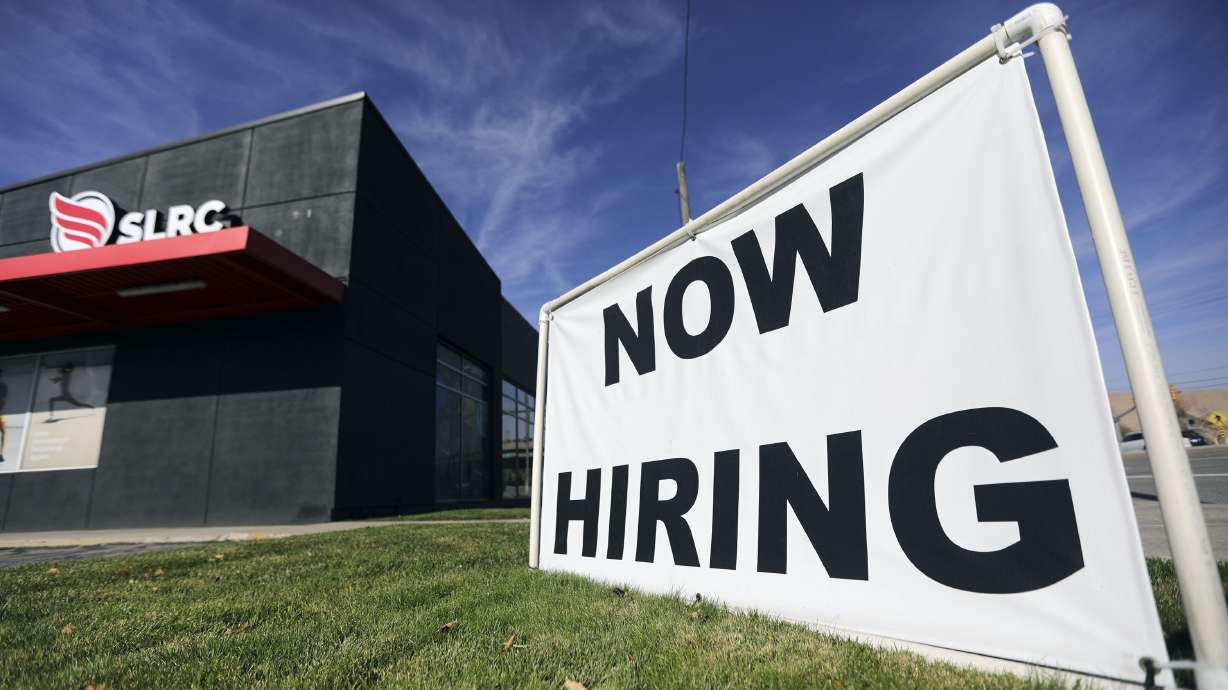Estimated read time: 4-5 minutes
This archived news story is available only for your personal, non-commercial use. Information in the story may be outdated or superseded by additional information. Reading or replaying the story in its archived form does not constitute a republication of the story.
SALT LAKE CITY — Despite most economists expecting a national recession to appear in 2023, Utah's economy is showing no signs of a recession, Utah Department of Workforce Services chief economist Mark Knold said Friday.
Year-over-year job growth is estimated at 2.6%, with the state's economy adding a cumulative 43,100 jobs since November 2021. Utah's current job count stands at 1,688,600.
Additionally, November's seasonally-adjusted unemployment rate for Utah inched up one-tenth of a percentage point to 2.2%, still well below November's national unemployment rate of 3.7%.
Approximately 38,200 Utahns are unemployed.
"Both of those numbers are slightly weaker than they were just two months ago. Is this the first steps into an anticipated recession, or are they just numbers setting into a more normal long-term trajectory with the wild up and down look back upon the pandemic economy fading from the measurement landscape?" Knold asked.
It's probably a combination of both factors, he said.
He added that his department has been anticipating a slowing in Utah's economy, as the job growth rate was "destined to settle down" compared to last year.
The question of whether this slowdown will develop into a Utah recession remains to be seen, Knold said.
According to the National Bureau of Economic Research — the organization responsible for officially labeling any segment of the U.S. business cycle as a recession — a recession involves a significant decline in economic activity that is spread across the economy and lasts more than a few months.
So what is a significant decline in economic activity?
"Any setback to the economy must be of one, depth; two, duration; and three, diffusion," Knold said.
For depth, the normal criterion is a decline in the nation's gross domestic product. GDP is the dollar value of all the goods and services produced in the nation.
"A recession would be attached to a contraction in this total value of national goods and service production," Knold said, adding that GDP is usually measured every calendar quarter.
This brings up the next criterion for recession, which is duration.
Knold said that the minimum duration criteria is "two consecutive quarters of contracting GDP."
While this in itself doesn't make a recession, it is required to call it a recession.
Related:
The year 2022 saw two consecutive quarters of GDP contractions, yet no recession was called because of the third "make or break" criterion of recession — diffusion — the component where the nature of the economic slowdown is evaluated.
"Is the economic slowdown broad based? Does it negatively impact multiple industry sectors? Is it taking jobs away from the economy? Are consumers reacting negatively?" Knold asked. "None of these were a 'yes' in 2022 and so, those two consecutive contracting GDP quarters were not labeled as a recession."
"There has to be broad-based, negative economic reaction to a consecutive negative GDP to make for a recession," he added. "GDP did not shrink due to lack of demand. It was instead due to supply constraints."
Therefore, a recession has to be driven by faltering and consumer demand for more goods and services.
Currently, the Federal Reserve is looking to reduce consumer demand by raising interest rates.
"We have seen this impact most visibly in the recent increase in mortgage rates. Such action has dramatically slowed the nation's and Utah's housing markets," Knold said. "But for now, the negative impact is not significantly spread beyond the housing and housing-related financial markets."
Knold said that he expects the Fed to continue to push interest rates upward until it sees a broader spread of reduced consumer demand. As reduced consumer demand spreads through the economy, it would normally show itself in the labor market as reduced wage growth and increased layoffs.
"The Fed would love to see wage growth slow without a big increase in layoffs, accomplishing the so-called 'soft landing' that brings inflation under control without causing a big jump in unemployment," Knold said, adding that he expects the Fed to continue to raise interest rates until labor market cooling is attained.
In Utah, there is no significant cooling in the state's labor market.
Although the state's unemployment rate has risen from 2% to 2.2% over the past several months, Knold isn't concerned about the Beehive State's economy.
"We do not anticipate the Utah economy being brought to its knees in 2023 by the Fed's actions. We will give a nod to the Fed that they will slow the speed of the Utah economic train in 2023, but we do not anticipate any derailing," Knold said. "Job growth will slow some and the unemployment rate will also rise some but there is just too much momentum and too much tightness in the Utah labor market for the Fed to dramatically knock the Utah economy off track."
He added that the Fed's goal is to slow the national economy, not Utah's.
"We do not anticipate a Utah recession in 2023. A slowdown, yes, but a recession, no," Knold said.
The full employment summary can be found here.










